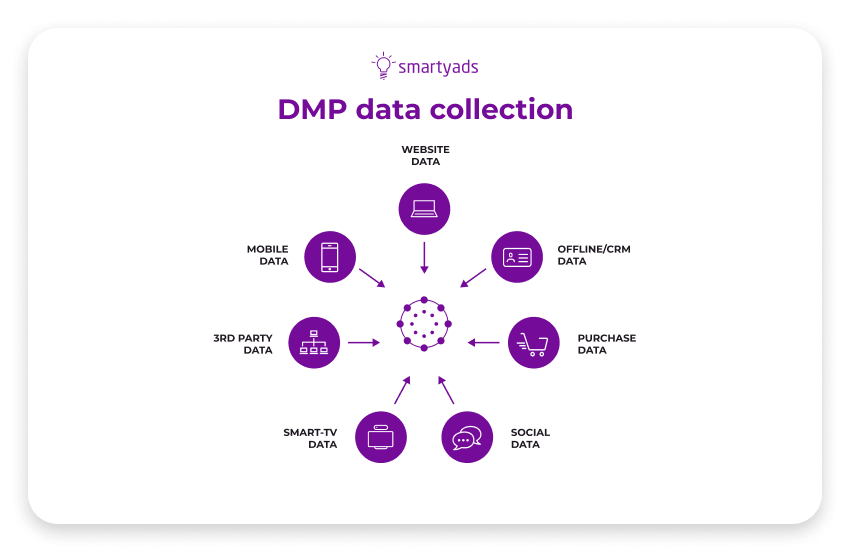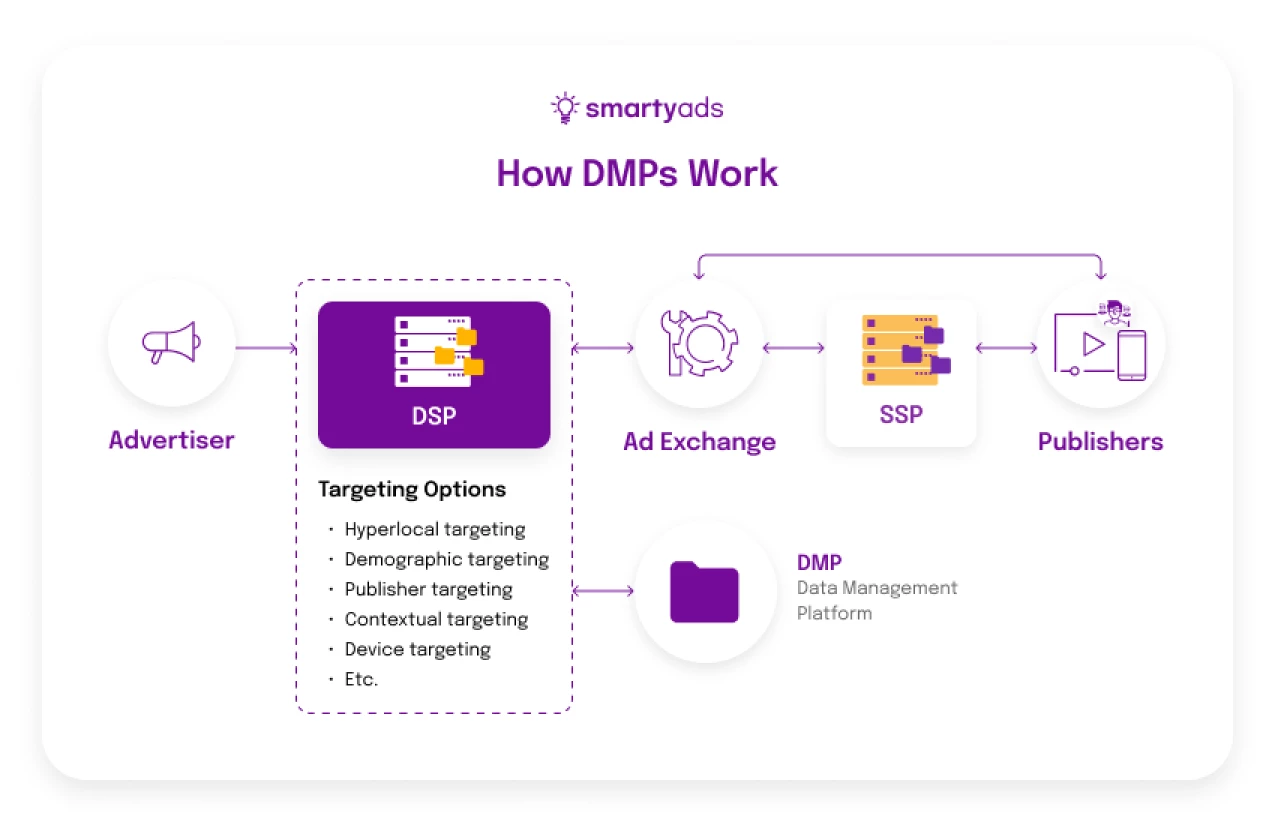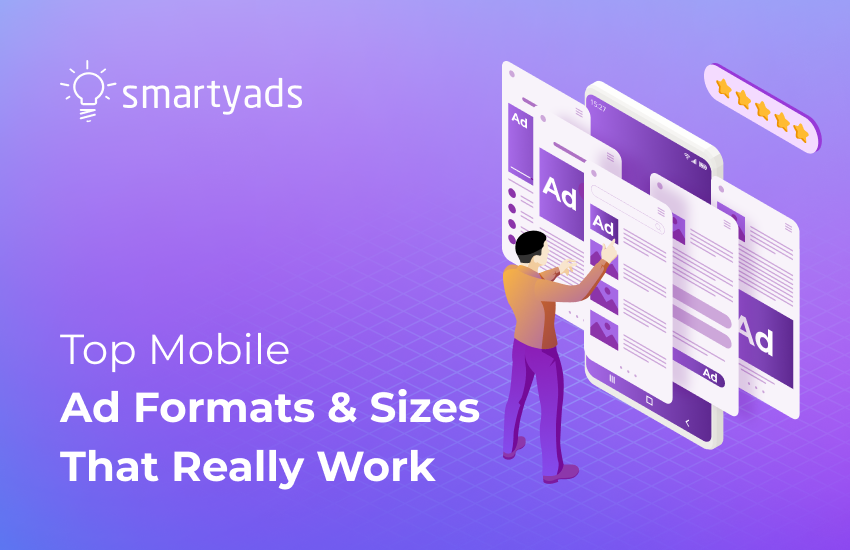Lately, the phrase “big data” has been creating quite a stir—some see it as the future of marketing, while others are left scratching their heads in confusion.
But what exactly is big data? Is it a breakthrough in decision-making or just another buzzword destined to fade?
In simple terms, big data refers to an overwhelming amount of information gathered from both online and offline sources—far beyond what a single company might generate. It’s a blend of internal metrics and external insights, forming an intricate puzzle.
The real question is: With such an avalanche of raw, unfiltered information, how can businesses extract value from it? Is there a way to bring structure to this chaos? That’s where the DMP definition begins to unfold, but is it truly the answer—or just part of the story?

What is a data management platform?
A DMP (Data Management Platform) serves as a central venue for data collection, organization, and activation (info is provided from vаried sources). It’s a powerful marketing tool used to create anonymized customer IDs, stock aggregated user data, and share it with ad systems.
DMPs include a centralized consumer data warehouse that brings together information from all ad channels and disparate touchpoints. They are intended to aggregate manifold consumer insights from various sources under one roof and gain a 360-degree perspective of campaigns.
These tools help advertisers generate essential customer 'portraits, facilitate the storage of essential customer insights, optimize media buying processes, and create ads that resonate with their audiences.
What types of data does a DMP collect?
Let’s review some of the common DMP examples and what types of information they can aggregate.
First-party data
Information is collected directly from the company's own sources, such as website visits, CRM systems, social networks, subscriptions, mobile devices, and applications. This type of information is considered to be the most valuable channel of consumer information because, based on it, one can create unique privacy-friendly customer profiles. Plus, those profiles will only be available to you, not your competitors.
Second-party data
This kind can be accessed through mutually beneficial relationships with partners, suppliers, or other companies you collaborate with for data sharing. This means that you obtain data from your trusted partner, and you are allowed to use it for advertising purposes.
Third-party data
Data acquired from external websites and social media accounts. It benefits reach a wider audience by complementing first-party data, enabling marketers to scale their efforts, expand their reach, and enhance personalization. Access to this type of information allows brands to significantly enhance the accuracy of their targeted advertising. This is because the user segments are selected based on qualitative rather than purely quantitative characteristics. The brand’s main task is to clearly define the specific traits of its target audience and let the platform locate them using the collected data.
Typically, access to such a type of data pool comes at a cost.
Where is it typically employed?
In advertising campaigns designed to target anonymized audience segments.
What problems does it solve?
The role of DMP for targeting is hard to undervalue. It enhances the precision and effectiveness of audience tаrgeting, ensuring your message reaches the proper segment of people at the right time.
Isn’t DMP similar to CDP?
Yes, they are often confused with Customer Data Platforms (CDPs), and at first glance, it’s easy to see why. Both systems are designed to collect and structure information, which makes them appear quite similar. However, there is one fundamental difference: DMPs gather data from external, open sources, casting a wide net to build insights. In contrast, CDPs are limited to working solely with info already owned by a particular company, focusing on organizing and leveraging existing customer information.
Think of it this way: a DMP is like an explorer, venturing far and wide to gather new insights, while a CDP is more like an archivist, organizing and making the most of what’s already in the vault.
Is there a specialized mobile data management platform?
Yes, a mobile DMP is a specific subset of this platform (MDMPs) built to gather only specific data types from mobile apps. Meanwhile, general DMP collects data from different channels, including desktop, mobile, social media, and more. MDMPs might deliver more precise insights if you deal only with mobile advertising.

How does DMP work?
Data Aggregation
DMPs collect essential customer information, such as demographic and geographic attributes, cookie IDs, mobile app identifiers, history of online behavior, user interests, and more. This information can be gathered from multiple online and offline first-party sources: websites, mobile apps, social media platforms, CRM, web analytics tools, and even TV. Additionally, DMP AdTech platforms import third-party data that can extend and enrich the outlook.
Data arrangement
When the first and third-party data are assembled, the platform starts to process it. The information is then sorted into segments and prioritized. DMPs structure data hierarchically, classifying it according to predefined parameters and forming an explicit audience segment catalog.
Data analysis
Once the raw data is cleared of errors and inaccuracies and carefully segmented into taxonomies, it can be interpreted. DMPs analyze information about user’s past clicks, downloads, preferences, and engagement. A DMP records how users interact with an ad creative and evaluates which offers get the most positive response. This information is highly important for the strategic optimization of your ad campaigns.
Data allocation
When DMPs find correlation and causation between variables, they output meaningful patterns that are ready to be used. The data is then transferred directly to DSPs, SSPs, ad networks, portals, trading desks, and ad exchanges. Then, DMPs collect response data and check the performance again. This is a constant loop of filtering, distilling, and refining big data arrays to determine the best customer for your brand.

Why are DMPs important?
Exactly their varied functions are making DMPs important. For example, it can consolidate the control of all campaign and customer/audience data. Having a unified solution for managing data stimulates your marketing team to analyze customer insights effectively. This allows for the development, targeting, and optimization of campaigns aimed at the right customers and at the right time, ultimately boosting return on investment (ROI).
Using a DMP, one can inspect customer activity, converge their information, and launch successful campaigns. Specifically, DMPs help with the following:
- Managing multiple online campaigns across various devices.
- Combining customer and campaign data collected through anonymous, interactive, offline, deterministic, or probabilistic methods.
- Optimizing segmentation and scaling marketing campaigns effectively.
Preventing leaks by working with trusted vendors. - Enhancing marketing campaigns to improve metrics (reach and conversion).
- Controlling advertising expenses to improve overall marketing ROI.
- Aligning marketing and advertising endeavors.
Who uses data management platforms?
So, what entities deal with these platforms exactly? Primarily marketers within companies or agencies. Plus, DMPs are integrated with demand-side platforms, so as an advertiser, you can leverage the power of DMP for your campaign targeting automatically by registering and launching a targeted ad campaign.
What is a DMP for programmatic?
DMPs can be integrated with demand-side platforms (DSPs) and ad exchanges to maintain a seamless campaign targeting process. This means that if you leverage a demand-side platform, it’s better to integrate it with other DMP AdTech solutions to fully activate targeting insights (read additional information about the dots of the programmatic ecosystem).
When integrated with programmatic systems, DMPs collect and organize information to create anonymized profiles of the target audiences. Then, DMPs facilitate the sharing of this information with digital media and marketing channels, deciding who should sеe specific ads or content.
The key here is that advertisers or marketers cannot access a platform to upload or view user data. The platform automatically anonymizes all data, ensuring that names, addresses, and other details used for targeting remain hidden.
Below, you can see the picture of the typical DMP campaign functioning:
It is worth pointing out that forward-thinking advertisers often think about the perspectives of using this tech in the future. As they strive to still be competitive in the next three, five, or even ten years, they often consider the evolution of online experiences across devices and channels.
Proper data management, processing, and strict adherence to data protection regulations, such as GDPR, CCPA, and other international standards, are necessary to prepare for a competitive future. This is why many marketers prefer to work with advertising platforms already integrated with reputable DMPs that constantly evolve and comply with all global regulations — this simplifies the workflow and helps to future-proof campaigns.

DMP + DSP and how it works together
- Imagine a scenario with a fictional company specializing in electric vehicles. The company’s goal is to attract environmentally conscious urban dwellers aged 30–50 who commute within the city.
- When loyal customer Anna visits the EcoTrack website, the platform’s data management system (DMS) identifies her through a browser ID, connects her activity with the company’s CRM, and displays an ad for their newest foldable e-bike.
- Later, while Anna is reading a blog about sustainable living, a DSP integrated with the DMS matches her profile with EcoTrack’s audience data and shows another ad promoting the same e-bike, this time emphasizing its eco-friendly features.
- The next day, Anna opens a fitness app and encounters a personalized offer for a limited-time discount on the e-bike. Intrigued, she clicks through to the site, reads reviews, and schedules a visit to the nearest EcoTrack showroom for a test ride.
Meanwhile, other urban commuters like Anna see ads for EcoTrack’s foldable e-bikes online, and some visit the website to learn more about the product. In this example, the DMS not only guides Anna closer to making a purchase but also drives new potential customers to EcoTrack’s platform, broadening its reach and boosting engagement.
What you can do with DMPs
DMPs help advertisers better understand existing consumers, point out valuable audience segments, and develop a DMP marketing strategy (read here: Which Advertising Strategy Should a Business Choose). This is especially important with the rise of real-time bidding technology, which is all about buying audience attention rather than ad placements.
These platforms process information repeatedly, helping companies optimize their ad campaigns and deliver relevant brand messages. This leads to positive emotional experiences, increased lifetime value of existing customers, product satisfaction, and a higher return on marketing investment.
Publishers can also use DMPs to determine their audiences' preferences, which content they want to see, and which types of ads perform better. DMPs enable publishers to deliver better on-site personalization and optimize content according to audience preferences. This drives higher engagement and increases conversions, attracting even more media buyers. In this way, publishers monetize their direct and programmatic inventory to the fullest.
There are so many ways to use DMP in digital marketing, let’s review some of them:
How to use DMP technology if you are a publisher:
- Aggregate your first-party data in the platform and apply available features to create audience segments correctly.
- Individualize content delivery for every user by using audience segments aggregated by DMP.
- Monetize the user data by connecting to the programmatic ecosystem.
How to use the DMP platform if you are an advertiser:
- Collect and store data: CRMs, your apps, and other first-party data sources that can be contained in DMP, along with second-party data and third-party data.
- Structure disparate data into audience insights applicable to campaigns, e.g., creating separate audience segments for which ad campaigns will be suited.
- Activate audience segments. As DMP did the work on pulling insights and crafting meaningful audience segments, it’s time to activate this valuable output to ad campaigns. Make sure to integrate DMP with DSP, where campaigns will be launched. Alternatively, start advertising on a demand-side platform like SmartyAds DSP, which already features integration with a prominent DMP vendor, Eyeota.
- Since a DMP consolidates information from multiple devices, advertisers can launch personalized advertising campaigns that deliver impressions across various devices and channels and, thus, launch effective retargeting campaigns.
- If possible, advertisers can expand their reach with a particular DMP by leveraging the DMP’s look-alike modeling feature. This feature, in essence, finds a similar audience to the one you already target.
How does it work for media agencies?
Media agencies can benefit from DMP by creating a consolidated place for storing all kinds of user information, making lookalike modeling, or using the stats for in-depth analysis. Furthermore, a media agency can leverage an agency account to manage targeted ad campaigns on behalf of its clients effectively.
How to use DMP on SmartyAds DSP?
The most sought-after and valuable tool for marketers is the tool that improves the precision and personalization of their advertising offers. This means that with the right DMP (data management platform) software, one can deliver ads to a specific target audience at the right moment and on the right screen. In this regard, a DMP is the cornerstone of how accurate and effective personalization will be on your advertising platform.
This is precisely why SmartyAds DSP has integrated advanced targeting tools by partnering with Eyeota DMP, an international provider of targeting data technology for agencies, advertisers, and publishers, which is also recognized as an official Google-certified DMP partner.
Eyeota is our trusted data partner, powering all our global data integrations and managing a comprehensive, unified data taxonomy. Thanks to our close collaboration with the Eyeota team, you can leverage valuable and refined data sets tailored to your specific campaign needs. This ensures your targeting is not only precise and relevant but also maximized for impact.
Ready to take your advertising to the next level? Run campaigns with pinpoint accuracy and unmatched targeting on SmartyAds DSP!


.webp)


